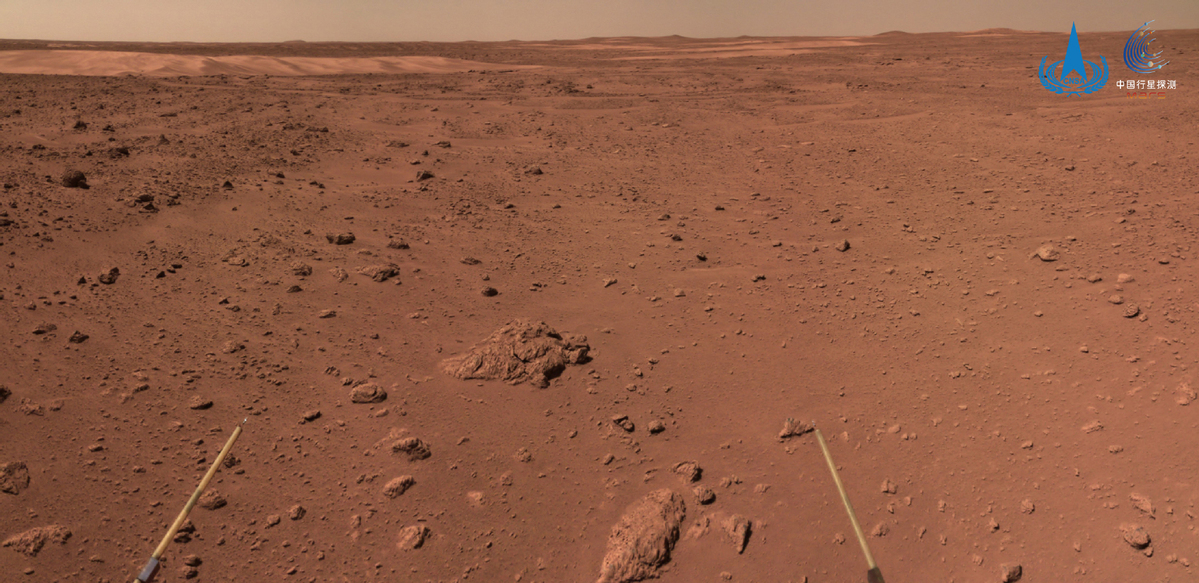Mars mission outcomes to advance space research
By ZHAO LEI | CHINA DAILY | Updated: 2021-08-18 07:14

China's Tianwen 1 Mars mission has generated a great deal of engineering and scientific data that will extensively advance research about the planet and support future exploration, according to mission leaders.
Liu Jianjun, chief designer of the Tianwen 1 mission's scientific system, said on Tuesday in Beijing that the 13 scientific devices mounted on Tianwen 1's orbiter and the Zhurong rover have generated more than 420 gigabytes of primary data since the mission was launched on July 23, 2020, from the Wenchang Space Launch Center in Hainan province.
Zhurong alone has obtained about 10 GB of primary data since it began to travel on the Martian surface on May 22. By Sunday, the robot had moved 889 meters, Liu said.
"The data will substantially boost scientists' studies of the planet. Data about Mars' landforms, material compositions and magnetic characteristics will help us investigate its environmental evolution," Liu said.
"For instance, we tasked the rover with surveying sand dunes it moves past, and by analyzing the data, researchers will be able to know about the dunes' origin, composition and movement, and their findings will allow scientists to deepen their knowledge about weather and climate change on the planet."
Sun Zezhou, head designer of the Tianwen 1 probe, said Zhurong has worked very well and its power generation and data transmission were "satisfactory".
Mission controllers are planning to task Zhurong with some "stress tests" to demonstrate the maximum capability of its equipment and accumulate experience for future robotic adventures on Mars and other planets in the solar system, he said.
According to the designer, the rover will suspend its operations from mid-September to late-October due to the anticipated disruption of its communications with Earth caused by solar electromagnetic radiation, and will then resume its mission.
The China National Space Administration announced on Tuesday that Zhurong has outlived its three-month life expectancy with all of its predetermined tasks completed. The 240-kilogram robot is the core component of the Tianwen 1 mission, the country's first interplanetary adventure, and is also the sixth rover on Mars, following five others launched by the United States.
The 1.85-meter-tall robot, which is now hundreds of millions of kilometers from Earth, will continue carrying out an extended expedition toward an ancient coastal area of Utopia Planitia, a large plain within the largest known impact basin in the solar system, according to a statement from the administration.
Tianwen 1, named after an ancient Chinese poem, traveled more than 470 million km and carried out several trajectory maneuvers before entering the orbit of Mars on Feb 10. Zhurong touched down on the planet on May 15 and separated from its landing platform a week later.
In another development, the China Manned Space Agency announced on Tuesday that astronauts on board the core module of the Tiangong space station will carry out their second extravehicular activity, or spacewalk, in coming days.
The three astronauts on the Shenzhou XII mission have stayed inside the core module for two months and conducted a host of mission tasks and scientific operations, according to the agency.
























